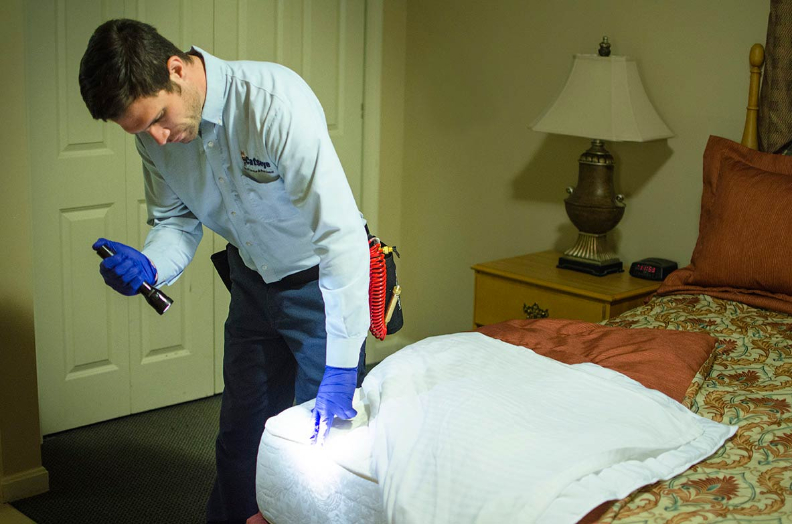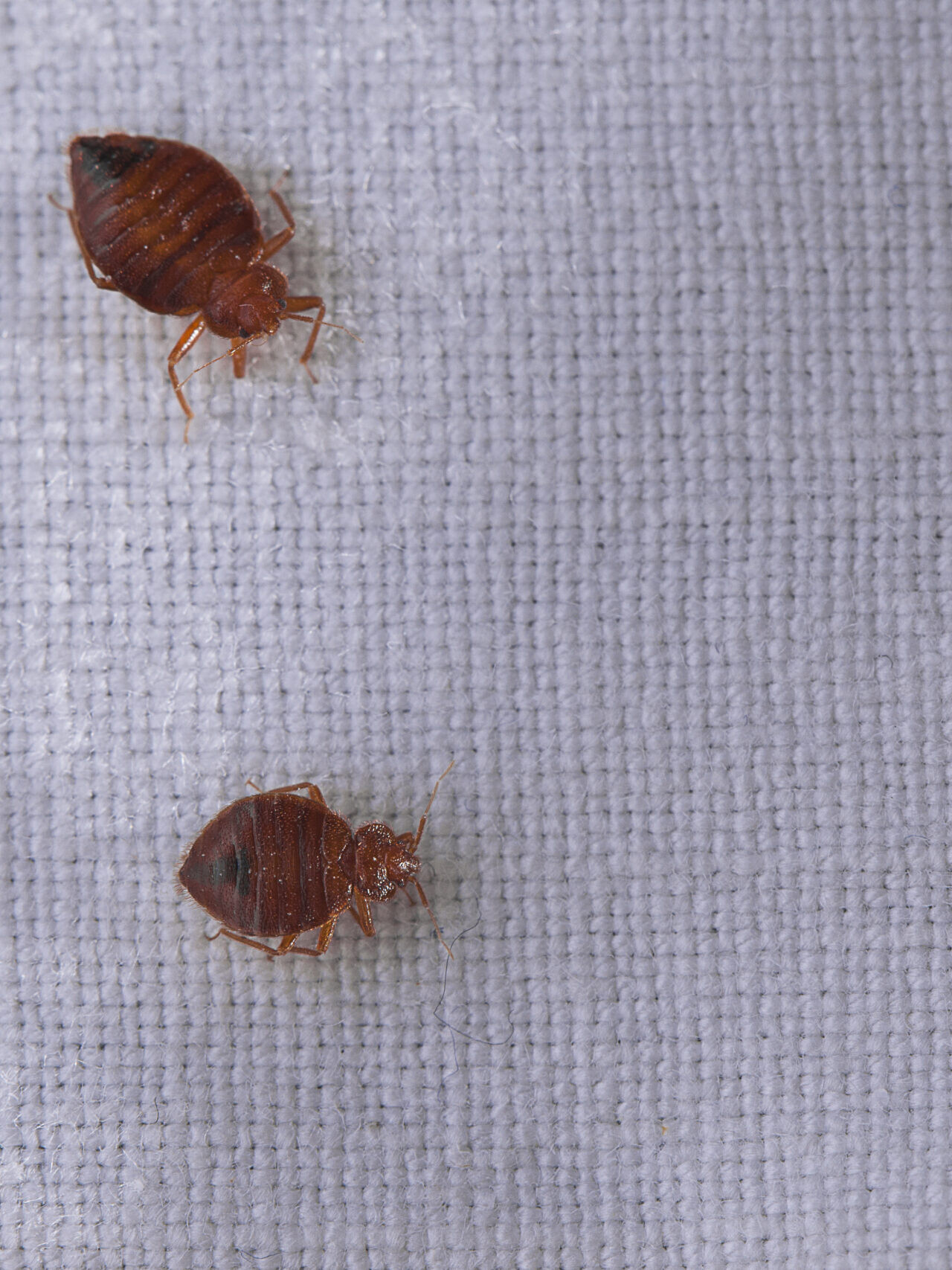How to Recognize Bed Bug Bites and Treat Them Quickly
How to Recognize Bed Bug Bites and Treat Them Quickly
Blog Article
Obtain Enlightened About the Sorts Of Pest Control Techniques and Their Advantages for Homeowners
Understanding the various pest control methods available to homeowners is important for effective parasite management. Property owners that are knowledgeable can make tactical choices that not only address pest issues yet likewise improve the overall quality of their living environment.
Chemical Parasite Control Approaches
Chemical bug control methods are a vital part of incorporated bug management strategies for home owners looking for efficient solutions to pest problems. These techniques include the application of chemical materials designed to get rid of or deter parasites that endanger personal residential property, health and wellness, and convenience. Typical chemicals used consist of insecticides, rodenticides, herbicides, and fungicides, each tailored to target details insects.
The primary advantage of chemical bug control is its fast efficiency; several formulas give instant outcomes, decreasing pest populations significantly quickly. In addition, developments in chemical solutions have caused products that are much more eco-friendly and have lower toxicity degrees for non-target microorganisms when applied properly.

Organic Insect Control Techniques
All-natural bug control techniques have actually acquired prominence as home owners look for safer and more lasting alternatives to traditional chemical strategies. Biological pest control techniques make use of natural predators, bloodsuckers, or pathogens to take care of insect populations successfully. This method is not just eco friendly but likewise reduces the threat of damage to non-target varieties, including beneficial bugs and wildlife.
Among one of the most typical biological control techniques includes presenting all-natural killers right into the atmosphere. Ladybugs can be utilized to regulate aphid populations, while nematodes target soil-dwelling bugs like grubs. Additionally, parasitoids-- microorganisms that survive on or within a host-- can be used to control certain parasite species by laying eggs inside them, eventually leading to their demise.
An additional approach is using biopesticides, which are stemmed from natural products such as minerals, plants, or bacteria (bed bug exterminator). These products can properly target pests while positioning marginal threat to humans and animals. Overall, biological insect control methods give homeowners with an effective ways of bug monitoring that straightens with ecological principles, promoting a healthier living setting while minimizing reliance on artificial chemicals
Mechanical Parasite Control Techniques
Mechanical insect control methods include a range of techniques that physically stop or get rid of insects without using chemicals. These methods are especially helpful for house owners looking for ecologically friendly options while ensuring the safety of their space.
One common method is the usage of obstacles, such as displays, catches, and internet, which avoid insects from entering homes or details locations. For example, installing home window displays can successfully keep pests out, while making use of physical barriers around yards can prevent larger pests like deer or rabbits. Additionally, mechanical catches created for rodents can record and eliminate these pests without the need for poisonous compounds.
An additional efficient strategy includes using brooms and vacuum cleaners to eliminate pests straight from surfaces. Normal cleaning and upkeep can dramatically decrease parasite populations by removing food sources and hiding areas. Furthermore, utilizing tools like ultrasonic insect repellents can hinder various parasites through noise waves that are undesirable my link to them but faint to humans.
Cultural Bug Control Practices
Social pest control methods concentrate on changing the environment and administration strategies to create problems that are much less for pest invasions. These techniques are basic in maintaining a balanced ecological community and reducing the reliance on chemical interventions. By changing farming practices, property owners can efficiently hinder parasites while advertising plant health.
One common method includes crop rotation, which interferes with the life process of parasites by transforming the types of plants grown in a particular area (bed bug exterminator). This not only reduces pest populations but also improves soil health. Furthermore, intercropping-- planting varied plants in closeness-- can perplex parasites and lower their capacity to situate their favored host plants
Water administration is one more important element of cultural practices. Proper watering strategies can stop standing water, which works as a breeding place for mosquitoes and other parasites. In addition, preserving tidiness check my blog in and around the home, such as routinely removing particles and food waste, can substantially decrease insect attraction.
Incorporating these social practices into an extensive bug management strategy permits house owners to create an atmosphere that normally prevents bugs, thus boosting the efficiency of various other control techniques while advertising sustainable horticulture and landscaping.

Integrated Parasite Management Approaches
Integrated Insect Administration (IPM) stands for an all natural approach that combines different approaches to effectively manage insect populations while lessening ecological influence. This technique incorporates organic, social, physical, and chemical techniques to achieve sustainable pest control. By evaluating pest populations and their natural opponents, IPM highlights tracking and determining insects before executing control steps.
One of the core principles of IPM is making use of thresholds, which establish the level of parasite task that necessitates treatment. This makes certain that therapies are used only when required, reducing the reliance on chemical pesticides. Biological control methods, such as presenting natural predators or bloodsuckers, operate in conjunction with cultural techniques like plant turning and environment control to interrupt pest life cycles.
Furthermore, IPM encourages making use of least-toxic chemical choices when intervention is necessary, focusing on items that position minimal risk to non-target microorganisms and the atmosphere. For house owners, adopting IPM comes close to not just enhances the efficiency of bug administration but additionally promotes a much healthier living setting, promoting biodiversity and reducing chemical direct exposure. Ultimately, IPM encourages house owners to make informed choices that balance parasite control with environmental responsibility.
Verdict
In final thought, comprehending the different bug control techniques equips house owners to make educated choices relating to pest administration. Each technique-- chemical, organic, mechanical, social, and incorporated pest administration-- provides unique benefits that cater to various demands and choices.
Comprehending find out this here the various insect control methods available to homeowners is essential for effective parasite monitoring.Chemical bug control techniques are a vital component of incorporated parasite administration techniques for property owners seeking reliable options to pest invasions. Overall, organic bug control techniques provide home owners with an effective means of parasite administration that aligns with eco-friendly principles, promoting a much healthier living environment while lowering dependence on synthetic chemicals.
Social insect control techniques focus on changing the atmosphere and management methods to create problems that are less favorable to pest infestations.In verdict, understanding the numerous insect control approaches empowers home owners to make informed choices concerning pest monitoring.
Report this page